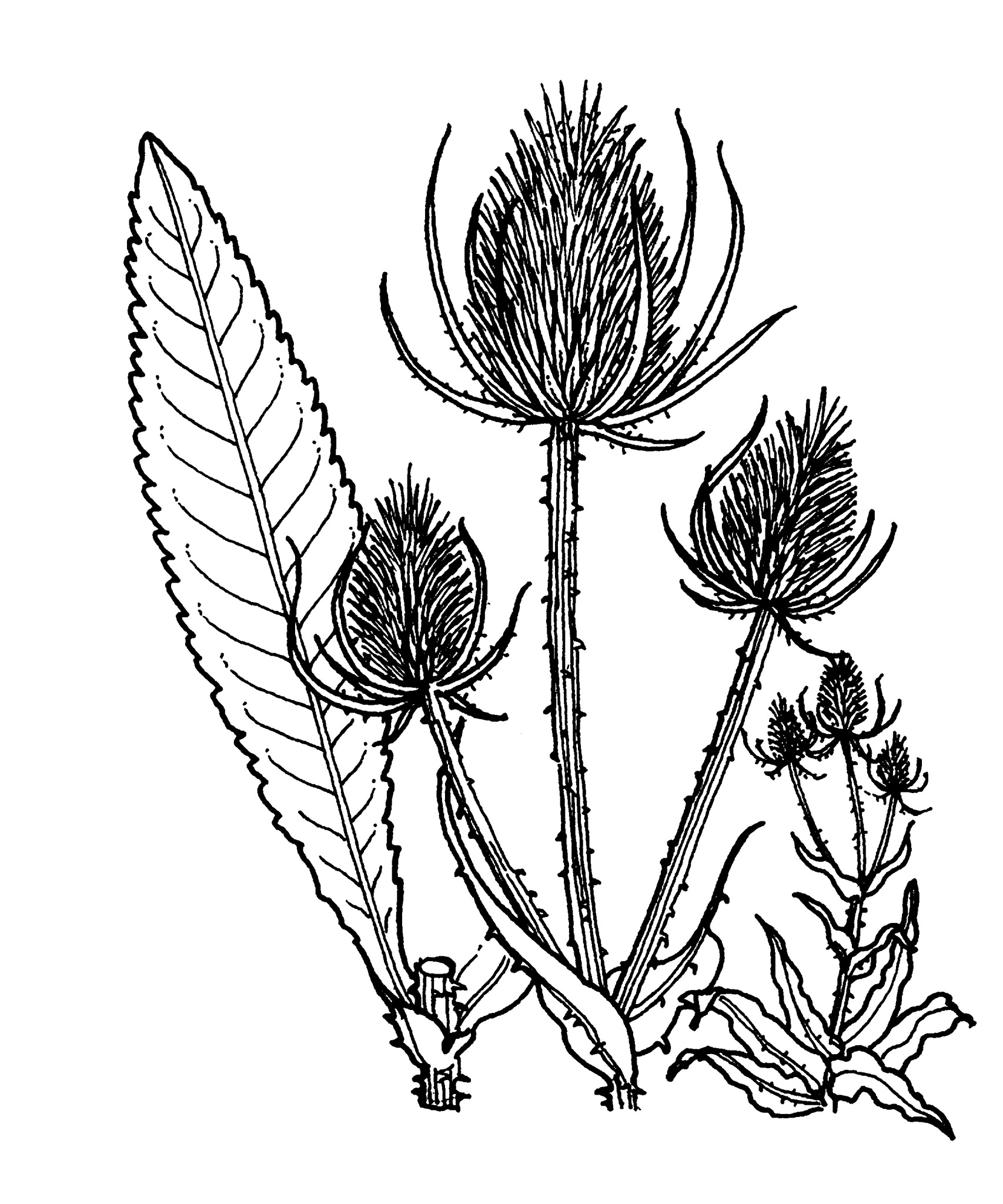
Possibly from Greek and referring to thirst, as the leaf bases of some species hold water.
Robust biennial or perennial herbs with prickly stems. Leaves in basal rosettes, sometimes also along the stems, simple or pinnately divided, often prickly and sometimes fused together at the base to form watercollecting troughs. Flowers in conical terminal heads with basal spiny bracts and individual flowers each with a spiny bract. Calyx cup-like, 4-angled and enclosed by a 4-lobed involucre. Corolla 4-lobed. Stamens 4.ovary inferior,1-chambered and containing 1 ovule. Fruits of achenes dispersed by trigger-like bracts which act as catapults when set off by passing animals.
Flower heads used in floral arrangements; some species have medicinal properties.
Thistle-like flower heads and spiny leaves and stems.
20 species from Eurasia and tropical Africa.
Source: (2002). Dipsacaceae. In: . Horticultural Flora of South-eastern Australia. Volume 4. Flowering plants. Dicotyledons. Part 3. The identification of garden and cultivated plants. University of New South Wales Press.
